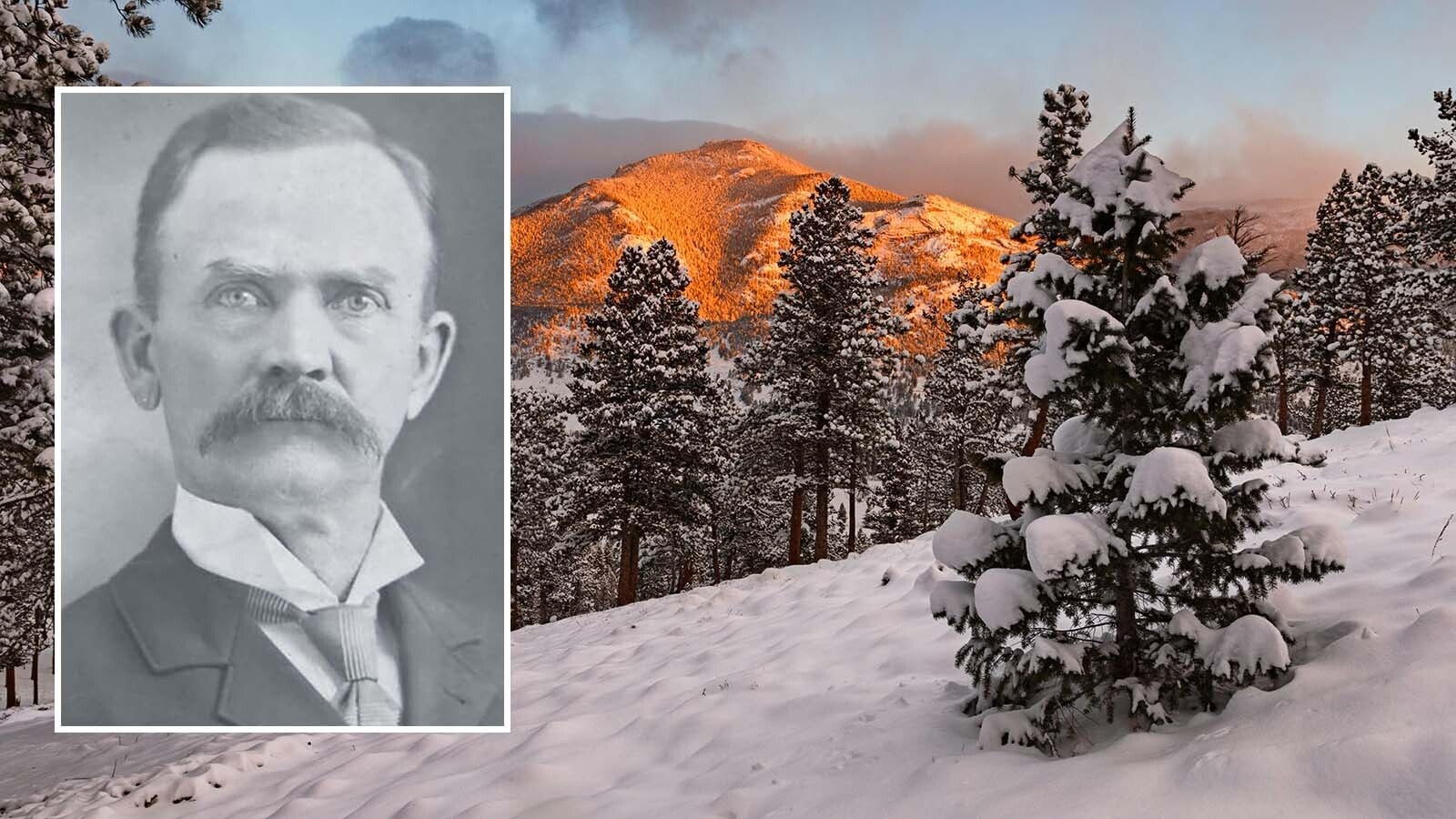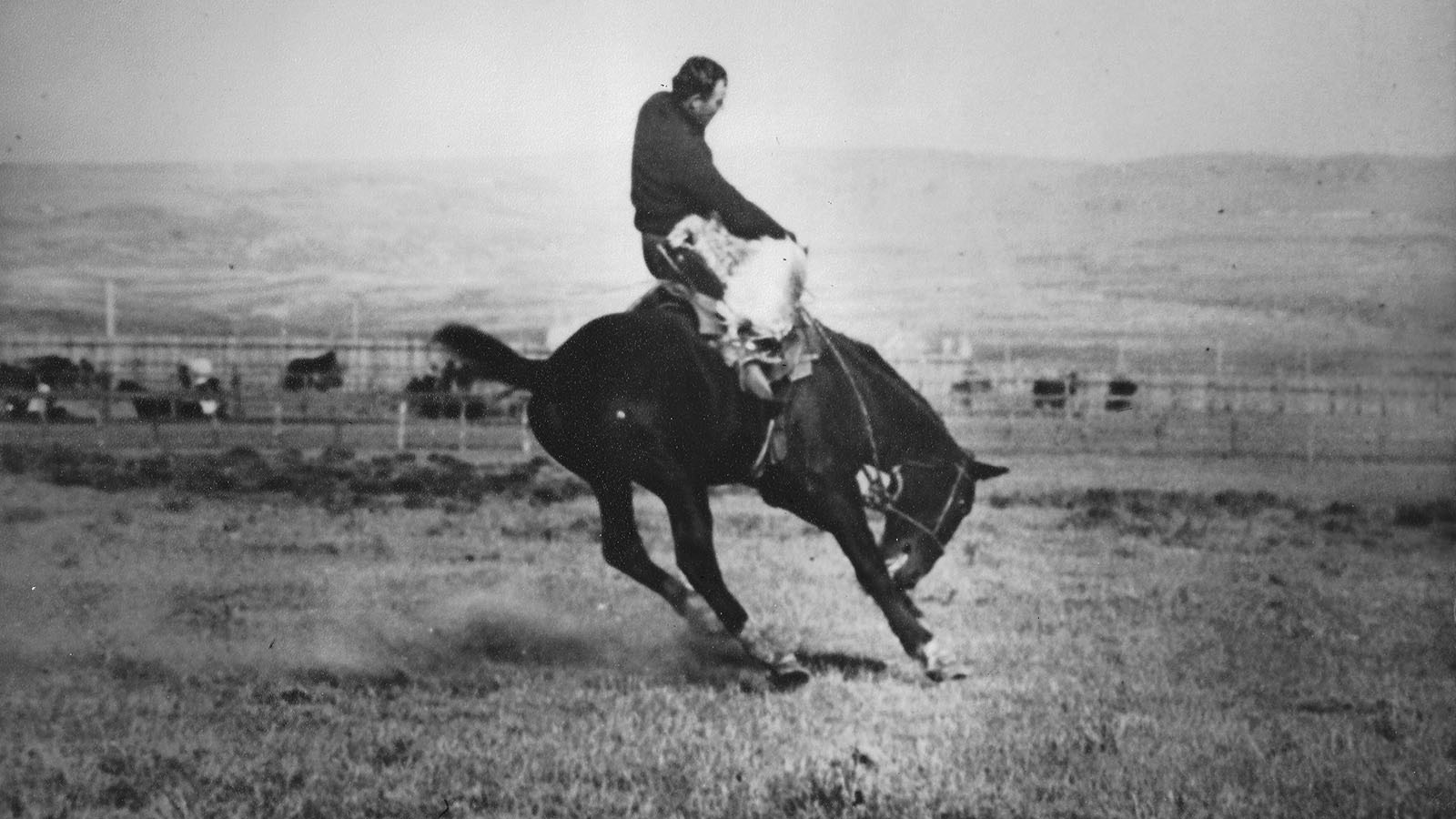Wild Bill Hickok was looking for a new start. It was July 12, 1876. James Butler Hickok and a party of adventurers including among others Calamity Jane Canary, Bloody Dick Seymour, and the brothers Colorado Charlie and Steve Utter wearing their finest buckskins paraded through Deadwood, Dakota Territory, ending their long trail ride from Cheyenne, Wyoming.
Deadwood, located in the northern Black Hills within the Great Sioux Reservation, was an illegal town. The 1868 Fort Laramie Treaty had reserved the Black Hills for the exclusive use of the Lakota and other tribes.
Prospectors had been sneaking into the Hills since 1874 when Lieutenant Colonel George Armstrong Custer led an expedition there. Custer brought along two prospectors who found gold in French Creek in the central Hills. Once news about the presence of gold was out, the military tried to but could not stop the flood of illegal gold hunters.
In December 1875, prospectors discovered gold in Deadwood Gulch, and the town began booming that next spring without any form of government or law enforcement.
After their parade through town, Hickok and company followed by a large crowd entered Saloon Number 10 for a drink. Carl Mann, a friend of Wild Bill’s owned Saloon Number 10. Mann told Hickok he could use the saloon as his headquarters, thinking that the notorious gunman would draw a crowd.
Tending bar was 25-year-old Samuel “Harry” Young, who had run away from his New York home when he was fourteen years old to see the West. Harry had first met Wild Bill in Hays City, Kansas, and had run into him on several occasions in different towns.
Seeing Harry behind the bar, Wild Bill said, “Kid, here you are again, like the bad penny, but I am awfully glad to see you.”
Hickok told Mann, “He is a good boy and you can trust him. Take my word for that.”

Tid Bit And Laughing Sam
As the days passed, Hickok and the others settled into Deadwood’s wild and woolly lifestyle. Tid Bit, one of the sporting girls who had arrived in Hickok’s party, had spent the night with 29-year-old Samuel S. “Laughing Sam” Hartman. Hartman was named Laughing Sam because he had a scar on one cheek that made him appear to be always laughing.
Instead of paying Tid Bit with the agreed upon two ounces of gold dust, Laughing Sam tricked her with copper filings. Finding that Laughing Sam had deceived Tid Bit, Calamity Jane borrowed two ivory-handled six shooters from Charlie Utter.
Charlie, Joe “White Eye” Anderson, and others followed Calamity into a crowded saloon and gambling hall where Laughing Sam and his partner, Myer “Bummer Dan” Baum were running a faro game.
Marching up to Laughing Sam’s table with a pistol in each hand, Calamity Jane announced to the crowd what Laughing Sam had done to Tid Bit. “I never heard a man get such a cussing as she gave him,” White Eye wrote. “And she made him give Tid Bit two twenty dollar gold pieces.”
On August 2, 1876, Wild Bill was playing poker with Carl Mann, Charlie Rich, and Captain William Massie in Saloon Number 10. Harry Young was tending bar. After twenty minutes of play, Massie beat Wild Bill’s hand.
“Bill then asked me to bring him fifty dollars worth of checks which I did,” Young said. “I placed the checks on the table in front of Bill, standing as I did so between him and Carl Mann. Bill looked up at me and remarked: ‘The old duffer (meaning Massie) broke me on the hand.’ These were the last words he ever uttered. There was a loud report, followed by the words ‘Take that.’”
Jack McCall had shot Hickok in the back of the head killing him instantly. McCall raced into the street where a crowd surrounded and caught him. A miner’s court convened. McCall falsely claimed Hickok had killed his brother.
The jury came back with a verdict of not guilty and McCall left Deadwood. Later in Cheyenne McCall bragged about committing Hickok’s murder, was arrested, found guilty in federal court at Yankton, Dakota Territory, and hanged.

Harry Young And Laughing Sam Begin a Feud
After Hickok’s murder, a feud developed between Harry Young and Laughing Sam. Speculation is that it was over a woman.
On a variety of occasions and to different people, Laughing Sam made statements that he was going to kill Young. On August 19, 1876, Laughing Sam asked Carl Mann if he could borrow a gun. Mann refused to loan him one.
Twice Mann approached Laughing Sam and tried to stop him from making threats against Young. Laughing Sam told Mann, “Sam Young, the son of a bitch, I will kill him.”
The evening of August 22, the feud was red hot. Mann told Harry Young to work in a dimly lit portion of the saloon. Mann then went to the dance hall where Hartmann was located. He told Hartman if he killed Young he would go up in a second, meaning that they would hang him. Hartman replied, “I have only a little while to live, and I will kill that Young … if they hang me tonight.”
At 10 that evening, Laughing Sam Hartman entered Saloon Number 10 and asked for Carl Mann. At the same time Hartman’s partner, Bummer Dan wearing Laughing Sam’s hat and overcoat, walked through the saloon to the rear door.
In the dim light of the rear of the saloon, Young saw Bummer Dan walking towards him wearing Laughing Sam’s hat and coat. Thinking it was Laughing Sam come to kill him, Young pulled out a pistol and shot Bummer Dan twice. “I am murdered,” Bummer Dan shouted and soon after died.
A crowd came after Young who said, “If I am the man you are looking for, I deliver myself up.” When asked if he had done the shooting, Young answered, “I did, and all I want is a fair trial, and if found guilty am willing to suffer the consequences.” Young said he thought he shot the wrong man.
The citizens of Deadwood appointed Judge W. R. Keithley to preside over the trial. One lawyer acted as prosecuting attorney and another lawyer acted as defense attorney, as they empaneled a jury. The defense’s case was simple—self-defense.
After three and a half hours of deliberation, the jury returned the verdict. As the Black Hills Pioneer recorded “The jury … returned the usual verdict of not guilty.”

It's Time To Leave Deadwood
Young and twenty others left Deadwood, October 1, 1876, guarding a shipment of gold dust to Cheyenne, Wyoming. Once Young was paid off in Cheyenne, he headed for the west coast and never returned to Deadwood.
Laughing Sam may have also left Deadwood right after Bummer Dan’s shooting. There is no record that he was a witness in Young’s court case.
Laughing Sam entered a more active life of crime. Newspaper accounts indicate that he began robbing stagecoaches, teamsters, and other travelers on the trails to Deadwood.
The October 4, 1877, edition of the Cheyenne Daily Sun stated, “Parties that are well acquainted with Laughing Sam assure us that he is a desperate fellow, who would not hesitate to take life in order to accomplish any object he might have in view.”
In August 1877, C. C. Sweeny, A. A. Jones, and Henry A. Homan were traveling by wagon on the Fort Pierre to Deadwood Trail. When they came to the Cheyenne River crossing, they noticed three men on horseback standing on a far hill observing them.
The next morning, the three men approached the wagon as it traveled westward. One rider came within twenty feet and said, “Good morning.”
The riders rode up along the wagon two on one side and one on the other. When the riders got themselves into position, they pulled out their revolvers and with an oath one of them shouted, “Put up your hands and stop that team!”
The bandits ordered the men in the wagon to get out on the right side. The robbers began searching their victims and the contents of the wagon, taking over $300 in cash and other items. The robbers did not wear masks. A. A. Jones recognized the man who was searching them as Laughing Sam.
“Hello Sam! For God’s sake leave me my watch as I think the world of it,” Jones said. Laughing Sam jumped back in surprise.
“Where have you ever seen me?” he asked.
“In Deadwood,” Jones answered. Laughing Sam left Jones his watch but the thieves took all their weapons and Jones’ good horse leaving a worthless critter behind.
Later Laughing Sam and Curly Wilson, with a band of robbers, held up a treasure coach at a stage station near Buffalo Gap, Dakota Territory, on its way to Cheyenne, several men were killed on both sides. Sam and Curly got away with a portion of the shipment.
Laughing Sam also threw in with the notorious highwayman Clark “The Kid” Pelton and continued his life of crime.
Hiding Out in Iowa
After several successful robberies, Laughing Sam and Curly Wilson figured they needed to lay low for a while. They traveled to Iowa where they buried their treasure amounting to $4,000 and worked as honest laborers for a local farmer at $18 a month.
As it happened, one of the farmer’s neighbors had just returned from the Black Hills. A few weeks earlier on a moonlit night he had been robbed on the and he thought he recognized Laughing Sam as the man who held a pistol to his head demanding his money.
The neighbor stopped and talked to Hartman and after hearing his voice, he was sure that Laughing Sam was the one who had robbed him. He traveled to Omaha, Nebraska, and told the U.S. Marshal of his suspicions. The marshal arrested both men and soon determined who they really were.
Hartman was tried in Rapid City, Dakota Territory, in 1878, and sentenced to nine years and eight months in the Detroit House of Corrections, in Detroit, Michigan. This was the third longest sentence to come out of Dakota Territory, the only ones longer were both for murder. The usual sentence for robbery averaged 1.5 years.
Did Laughing Sam Join A New Gang?
Laughing Sam was released on February 10, 1882. Someone wrote on the register “Pardoned” and Laughing Sam disappeared from the record. Or did he?
About this time, a group of thugs operated out of Wyoming calling themselves the Hole in The Wall Gang. One of the most notorious was a character named “Laughing Sam” Carey.
Could this man be Laughing Sam Hartman? Hartman was known to use aliases in the past including Sam Hartwell and even Sam Young, the name of his old nemesis. In any event, Laughing Sam Carey also eventually disappeared from the scene.
In 1915, Harry Young published his memoirs, Hard Knocks, which chronicled his adventures in the West with second-hand stories of various well-known frontier characters. An interesting aspect of his book—there is no mention of his feud with Laughing Sam or his shooting of Bummer Dan.
Maybe a fitting ending to this tale is from the Black Hills Pioneer after the jury acquitted Young of Bummer Dan’s murder—“the usual verdict of not guilty.”
Bill Markley can be reached at markley@pie.midco.net





